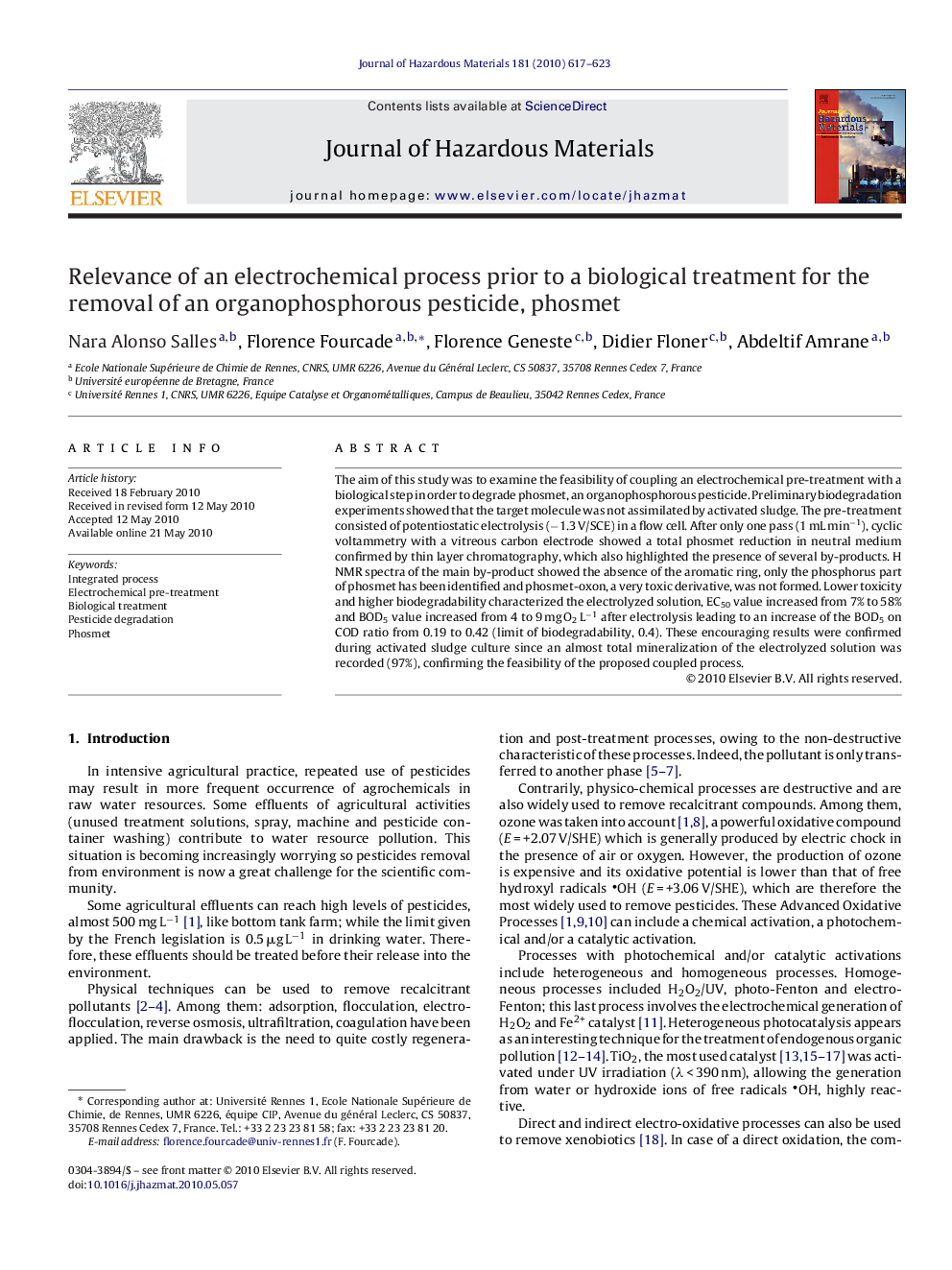| Article ID | Journal | Published Year | Pages | File Type |
|---|---|---|---|---|
| 580007 | Journal of Hazardous Materials | 2010 | 7 Pages |
Abstract
The aim of this study was to examine the feasibility of coupling an electrochemical pre-treatment with a biological step in order to degrade phosmet, an organophosphorous pesticide. Preliminary biodegradation experiments showed that the target molecule was not assimilated by activated sludge. The pre-treatment consisted of potentiostatic electrolysis (â1.3 V/SCE) in a flow cell. After only one pass (1 mL minâ1), cyclic voltammetry with a vitreous carbon electrode showed a total phosmet reduction in neutral medium confirmed by thin layer chromatography, which also highlighted the presence of several by-products. H NMR spectra of the main by-product showed the absence of the aromatic ring, only the phosphorus part of phosmet has been identified and phosmet-oxon, a very toxic derivative, was not formed. Lower toxicity and higher biodegradability characterized the electrolyzed solution, EC50 value increased from 7% to 58% and BOD5 value increased from 4 to 9 mg O2 Lâ1 after electrolysis leading to an increase of the BOD5 on COD ratio from 0.19 to 0.42 (limit of biodegradability, 0.4). These encouraging results were confirmed during activated sludge culture since an almost total mineralization of the electrolyzed solution was recorded (97%), confirming the feasibility of the proposed coupled process.
Keywords
Related Topics
Physical Sciences and Engineering
Chemical Engineering
Chemical Health and Safety
Authors
Nara Alonso Salles, Florence Fourcade, Florence Geneste, Didier Floner, Abdeltif Amrane,
